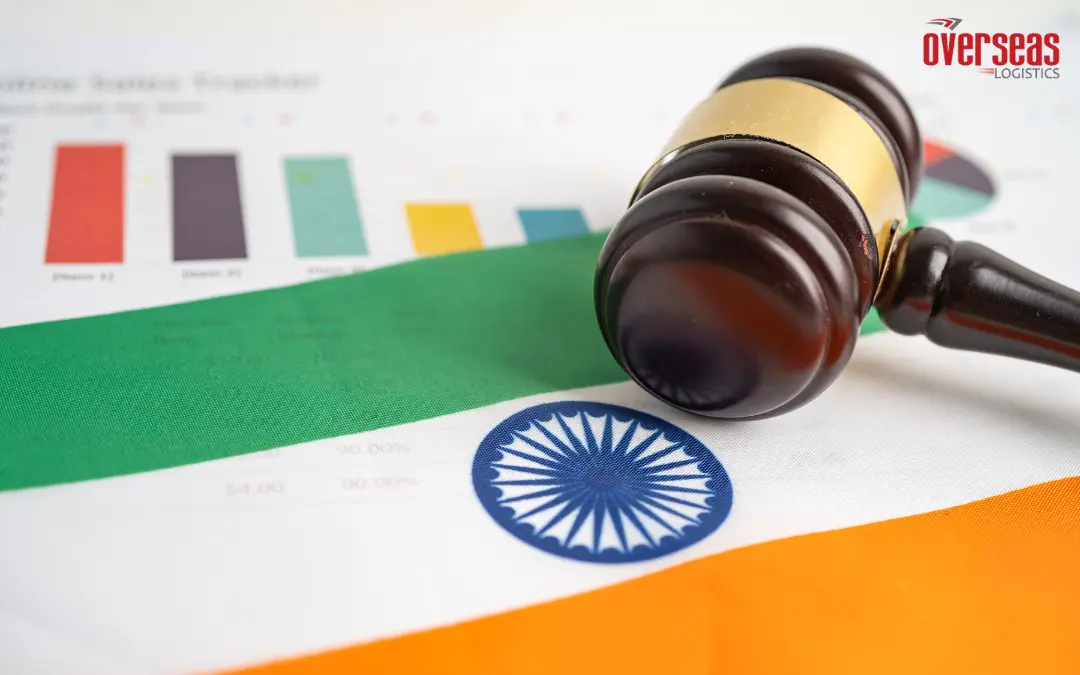Navigating the intricate landscape of international trade requires a profound understanding of customs duties—the taxes imposed on goods crossing borders. Far from mere bureaucratic procedures, customs duties play a pivotal role in shaping the cost structure of global commerce.
Unveiling the Customs Duty
Delving into the world of customs duty unveils various charges, each with a distinct purpose, from safeguarding domestic industries to fueling social causes. Decoding these charges can offer valuable insights for optimising your trade operations.
Exploring the Spectrum: Types of Customs Duties in India
1. Basic Customs Duty (BCD)
At the forefront is the Basic Customs Duty (BCD), the primary tax on imported goods entering India. Defined by the Indian Customs Tariff Act, BCD rates range from 5% to 40%, significantly influencing the total landed cost of imported items.
2. Additional Customs Duty or Special CVD
Also known as Special Countervailing Duty (CVD), this duty aligns with Central Excise Duty, aiming to level the playing field between imported and domestically manufactured goods. It ensures imported items don’t gain an unfair advantage over their local counterparts.
3. Countervailing Duty (CVD)
Distinct from Special CVD, Countervailing Duty counters subsidies provided by foreign governments on exported goods. Its purpose is to prevent foreign nations from manipulating the system by subsidising exports and safeguarding domestic industries.
4. Anti-Dumping Duty
Imposed on foreign goods sold in India below their “normal value” in the home country, Anti-Dumping Duty shields domestic industries from unfair competition. When foreign products are dumped into the Indian market at rock-bottom prices, this duty levels the playing field.
5. Education Cess
An additional charge supporting educational initiatives in India, Education Cess typically stands at 2% on aggregate customs duties, emphasising the nation’s commitment to education as a developmental cornerstone.
6. National Calamity Contingent Duty (NCCD)
To amass resources for swift deployment during natural disasters, NCCD is calculated as a percentage of the imported goods’ value. The rate varies based on the commodity type and prevailing social or environmental needs.
7. Safeguard Duty
Under Section 8B of the Customs Tariff Act, Safeguard Duty shields domestic industries from sudden import surges, offering a buffer for adjustment against external market pressures.
8. Protective Duties
As the name implies, Protective Duties shield indigenous industries from foreign competition. These duties are carefully prescribed by the Indian Government after thorough market analysis, considering the competitive landscape and potential impacts on domestic industries.
9. Social Welfare Surcharge on Imported Goods
Replacing Education Cess and Secondary and Higher Education Cess, Social Welfare Surcharge aims to generate revenue for the Government’s social welfare initiatives, spanning healthcare, education, and poverty alleviation.
In Conclusion
Understanding the nuances of customs duties is crucial for businesses engaged in. By deciphering these duties, one can not only comply with regulatory requirements but also strategically optimise trade operations in the ever-evolving global market.
FAQs
Which are the types of exemption from customs duty?
There are several types of exemptions from customs duty in India, including:
- Exemptions to Oil and Natural Gas Corporations Limited (ONGC)/ Oil India Limited (OIL)
- Imports of secret goods by the Government
- Imports for India’s defense needs relating only to military hardware and software or for R&D units under the DRDO
- Imports by Central Policy Organisation for equipping their forces
- Exemption to goods from Customs duty only when imported against an Advance License (without Actual user condition)
- Crude and petroleum product
- Raw materials for the manufacture of CRGO Steel, ferrous scrap, and nickel cathode
What is an example of an anti-dumping duty?
The best example of an anti-dumping duty is when India imposed it on Chinese products, such as aluminum products and certain chemicals. This measure aims to protect local manufacturers from competing against cheap imports.
How can I pay my customs duty online?
To pay your customs duty online in India, you can use the ICEGATE e-payment gateway, which offers a seamless process:
- Visit the ICEGATE website and log in.
- Navigate to the e-payment section, choose the duty type (e.g., SEZ Customs Duty), and select the relevant document type.
- Ensure net banking is enabled with one of ICEGATE’s designated banks.
- Follow the prompts to make the payment.
How do I check my customs duty?
Use the ICEGATE portal, the Indian Customs Electronic Commerce/Electronic Data Interchange (EC/EDI) Gateway. This official platform provides E-Filing services for customs duties and is widely used by trade and cargo carriers.
What are the three important customs?
Customs play a crucial role in taxation, security, and trade facilitation.
What are the four main responsibilities of customs?
Customs have four main responsibilities:
- Preparing and processing import and export documentation
- Classifying and appraising imported merchandise
- Determining tariffs and duties to be paid
- Examining and inspecting merchandise to prevent the introduction of prohibited items.

